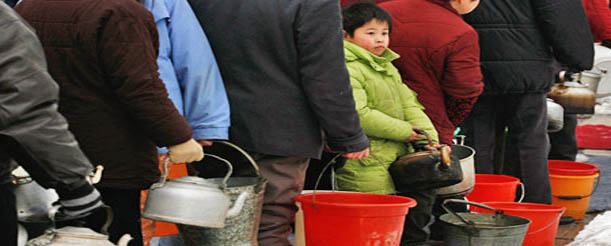A Few Facts About the World's Water Situation


97.5% - of the earth's water is saltwater. If the world's water fitted into a bucket, only one teaspoonful would be drinkable.
(The Human Development Report 2006) (Water, water, everywhere, but NOT a drop to drink.)
More than one billion people in the world do not have access to safe water. That is roughly one in seven of the world's population.
(The Human Development Report 2006)
In some countries, - the biggest killer is not Aids, Cancer or Heart Disease. It is water.
(The Human Development Report 2006)
Water-related disease - is the second biggest killer of children worldwide. 1.8 million children die every year as a result of diseases caused by unclean water and poor sanitation. This amounts to around 5000 deaths a day.
(The Human Development Report 2006)
The weight of water - that women in Africa and Asia carry on their heads is commonly 20kg, the same as the average UK airport luggage allowance.
(The Human Development Report 2006)
443 million - school days are lost each year due to water-related diseases.
(The Human Development Report 2006)
40 billion - working hours are spent carrying water each year just in Africa and it is generally women and children who are burdened with the task.
(Cosgrove and Rijsberman 1998)
An extra US$10 billion - each year is needed to halve the proportion of people without access to safe water and sanitation - about half of what rich countries spend on mineral water.
Water and sanitation infrastructure helps people take the first essential step out of the cycle of poverty and disease.
(The Human Development Report 2006)
Spread the Word

Millions of tons of water vapor are circulated through the atmosphere each day. Scientists estimate over 380 quadrillion gallons float through our atmosphere annually. Atmospheric water's technology replicates mother nature’s natural cycle of evaporation and condensation… our industry leading filtration system ensures your drinking water will be fresh, pure and free of toxins and contaminants.
The Value Proposition...
Human food requirement consists of four principal sources - water, agricultural crops, livestock and fisheries. Essentially, the demand for food depends on population and the dietary habits of the people under consideration.
Consequently, there are basically three ways to produce this food requirement; through rain-fed agriculture, irrigated agriculture and food import. In all cases water is the most important determinant to increased food production and rural development.








